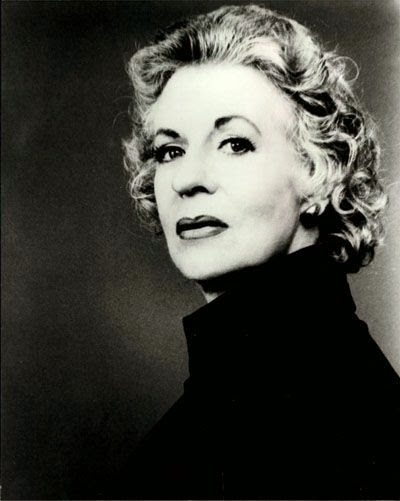THE TECHNIQUE

At the artist Playhouse we have found that structured freedom with guidance allows all artists to reach their true potential as they are not chained to a specific set of thinking or specific way to do things but rather uses their inherit individual talents, skills, and gifts to bring them to their greatest state of expression.
The Artist’s Playhouse technique is rooted within empathy. Understanding and connecting to the character based upon your life and your view of the world.
(What would have to have happened to me in my life, as me, for me to behave and think in the manner of this character.)
This is achveived through 3 crucial focus points.
THE 5 STAGES OF THE ARTIST
THE 5 STEP BASE
THE 11 QUESTIONS
Each artists at TAP starts with these three tools and creates a technique that is exclusive to them. We focus on the connection as well as the separation of you the artist and you the character and the control of both.
It’s a mixture of intellectual and emotional discovery that merges the two parts of the brain that dives all people.
OUR BELIEF

The Artists Playhouse is based on the belief that the most unique thing you can bring to the character is you and your point of view.
Tools, techniques, whatever you want to call them these are the things that help us to move forward, to grow, to learn but as in any other situation in life the correct tools must be used. Like a baseball player running to first base, a basketball player taking a shot, a prima ballerina doing a pirouette or even a maestro playing the piano the most important aspect is form. All you have to do is watch a basketball or baseball game, see a ballet, or listen to a piano concert to know not everyone’s form is the same and more importantly it shouldn’t be. Skill and emotion drive all the arts but what direction it drives should be up to the artist not luck.
At TAP each student is guided and encouraged to find what works for their unique individual talents. In short "to assign the technique to the actor not the actor to the technique".
We will work with you to see who you are and what challenges you face with your craft what is holding you back and why.
Trying to blindly copy someone else determined set of rules is like copying an answer in class you may get it right but you won’t know what It means and if they are not there you would most likely get it wrong. We help you find your style and let if flourish.
You just gained a huge amount of knowledge what should you do first? What do you do last?. What do you do with this information?
Using all your knowledge and your technique to best accomplish your objectives.
Now that you realize your base it's time to understand the never-ending journey the infinite loop of stages as you grow. How to keep that moving keep it fresh not ever becoming stagnant or boring.
This is a 5-step base and it’s called a base for a reason. Although it will work just fine on its own, we strongly encourage that you build upon this base to truly be catered to you personally.
We as people overthink, underthink and are constantly missing things right under our noses. The 11 questions is a guide to make sure that when you are creating your character you do so thoroughly and efficiently.
The world has changed a lot in the last 100 years from primarily theater to silent films to films with audio and films with color. We now live in a 4K world where every motion every twitch every look of the eye is scrutinized at such an extreme level. It would be ridiculous to think that acting hasn't changed in the past 100 years but that doesn't mean that all techniques in existence present and past can teach us something. We encourage all our students to reach out and understand as much as possible about techniques. Even if you think something wouldn't work for you at the time, the thirst for knowledge can sometimes reveal an insight into a character you have not even conceived of yet. As Thomas Edison said ... “I have not failed, I found 10,000 ways that did not work. “ Here are a few of the ones that came before us…
Stella Adler

In 1949, Stella started a school for acting that would last five decades and touch every part of American Theater. Combining what she had learned from the Yiddish theater, Broadway, Hollywood, and Stanislavsky, she opened the Stella Adler Theater Studio (later renamed the Stella Adler Conservatory of Acting). Among those to study at the conservatory were Marlon Brando, Robert De Niro, Warren Beatty, and Candice Bergen. Her belief in the supreme seriousness of her art kept many well-known members of the theater coming back for her intelligent and passionate advice.
It was Adler’s sense that “the theater exists 99% in the imagination” that informed her instruction. She proposed that one of the actor’s primary concerns must be with the emotional origins of the script. A student’s main responsibility was to search between the lines of the script for the important unsaid messages. This, she knew, took a combination of emotional availability and imagination. For her students she was both the toughest critic and the most profound inspiration, saying, “You act with your soul. That’s why you all want to be actors, because your souls are not used up by life.” To this day, nearly ten years after her death, Adler is still viewed as one of the foremost influences on contemporary acting.
Lee Strasberg

In 1948, Strasberg joined the Actors Studio as a teacher. The studio had been founded the previous year by Elia Kazan, Cheryl Crawford and Robert Lewis. Its aim was to provide theatrical professionals—actors, directors and playwrights—with the opportunity for creative exploration and growth. Strasberg became famous for his approach to acting, which drew from Stanislavski's techniques.
Strasberg asked his students to engage in what is known as "method" acting—actors call upon their own emotions and experiences and incorporate them into their performances. "The real secret to method acting—which is as old as the theater itself—is creating reality," Strasberg once said, according to the Boston Globe. "That is tremendously difficult. Some actors think behaving casually is the same thing."
In the early 1950s, Strasberg became the artistic director of the Actors Studio. He spent more than 30 years leading this creative enterprise, working with such great talents as James Dean, Julie Harris, Jane Fonda and Joanne Woodward. In 1969, Strasberg established the Lee Strasberg Theatre and Film Institute.
Uta Hagen

Because she has had a long, distinguished career on the stage, and because for decades she has been one of the most important acting teachers in America, and because she has written with wit and clarity about the technical craft of acting, Uta Hagen has had a profound influence on the way acting is practiced, taught, and thought about in this country.
Uta Hagen made her professional debut in 1937 at the age of eighteen as Ophelia in an Eva Le Galliene Hamlet in Dennis, Massachusetts. In 1938 she made her Broadway debut as Nina in the Lunts production of The Sea Gull. She played in twenty-two Broadway productions, including the legendary Othello with Paul Robeson and Jose Ferrer.
In 1948 she re-invented Blanche DuBois for the national tour of A Streetcar Named Desire with Anthony Quinn, and then succeeded Jessica Tandy's radically different Blanche for the Broadway run the next year. In 1950 she won her first Tony award, the Drama Critics Award, and the Donaldson Award for her creation of Georgie Elgin in Clifford Odets The Country Girl. She starred in such classics as Shaw's St. Joan and Turgenev's A Month in the Country, and in 1962 she created Martha in Albee's Who's Afraid of Virginia Woolf, winning her second Tony and second Drama Critics Award, as well as the London Critics Award. She has also appeared in many TV specials and several films.
Since 1947 Hagen has taught acting at the Herbert Berghof Studio. Together with her late husband, she trained generations of actors: Geraldine Page, Jason Robards, and Matthew Broderick are among the countless others who reached prominence.
As Jack Lemmon wrote, This extraordinary woman is one of the greatest actresses I have seen in my lifetime, yet she has deliberately made her acting career secondary to teaching and directing others so that they might benefit. Lord knows what exalted position she might have attained had she chosen to concentrate on her own acting career, but I guarantee that she has absolutely no regrets. Nor should she, because she has given so much to so many.
Her books, Respect for Acting (1973) and A Challenge for the Actor (1991) grew out of decades of collaboration and exploration of the actor's craft.
In addition to honorary doctorates from Smith College, DePaul University and Wooster College, in 1981 she was inducted into the Theatre Hall of Fame, in 1983 into the Wisconsin Theatre Hall of Fame, and in July 1986, she received the Mayor's Liberty Medal in New York City. In 1987 she was given the John Houseman Award and the Campostella Award for distinguished service.
Since her husband's death three years ago, Hagen has taken over the chairmanship of HB Studio and the theatre of the HB Playwrights Foundation. She honors his memory by continuing to shape their school as a source of inspired teaching and practice for theatre artists.
Uta Hagen has brought beauty, drama and dreams to the world, leaving her extraordinary legacy every step of the way.